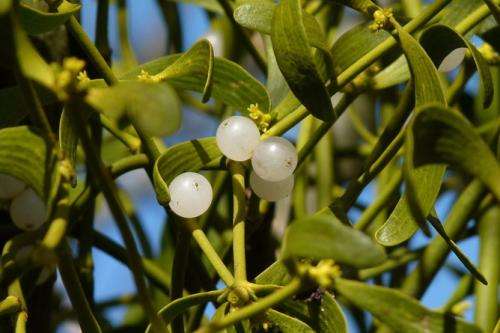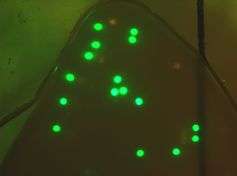Good parasite, bad parasite: Nature has a job for everyone

Parasites are thought of as free-loaders, but many contribute as much as they take. They service the ecosystem. From an ecological perspective, they are more like tiny, hidden architects that are overlooked by most people.
Take the case of the hairworm parasite. It is a cricket's nightmare. When the parasite reaches maturity, it needs to escape into water, so it forces its host to go for an unwitting dunk in a nearby stream or pond. A cricket which is infected with a hairworm is about 20 times more likely to stumble into a stream than an uninfected cricket.
But the very act of forcing crickets to their watery grave actually functions as a kind of fast food delivery service for the fish living in those streams. Cricket do not normally jump into streams and a drowning cricket is usually a rare treat for any fish. But thanks to the hairworm, these fish get to feast regularly on these large insects and it has been calculated that this straight-to-your-stream food delivery service accounts for more than half of the trout population's energy intake in some watersheds.
But apart from forest streams, parasites also alter ecological processes in other environments such as the seashore. On the coast of New Zealand, many mudflats are populated by a clam call the New Zealand Cockle (Austrovenus stutchburyi). Some of those clams are infected with a parasitic fluke call Curtuteria australis that embeds itself in the mollusc's foot muscle and waits to be eaten by its next host a shorebird.
It is no accident that C. australis lodges itself in the foot of the clam. As more and more parasites accumulate, the presence of those cysts causes the cockle's foot muscle to degenerate. With a mangled foot, the clam loses its ability to dig and is left stranded on the surface of the mudflat, exposed to hungry shorebirds – just what C. australis wanted.

But by doing so, C. australis also has a cascading effect on the rest of the ecosystem as the mudflat become covered with stranded bivalves. The nature of the seashore changes from one covered mostly with mud and sand, to one paved with hard shells. This actually increases the overall level of biodiversity in the area since the shells of the stranded clams provide habitats for other animals like limpets and barncles.
Parasitic romantic
Plant parasites can also affect ecosystem processes. While most people associate mistletoe with Christmas, it is actually a parasitic plant that has special root-like structures called haustoria that burrow into the host tree to suck out water and other nutrients. But for all that it draws from the host, this parasite returns it to the ecosystem in the form of enriched leaf litter.
A study published in the Proceeding of the Royal Society B shows that when mistletoes are removed from a forest, more a quarter of the birds species also disappear. The enriched leaf litter allows the forest to support a richer community of insects, which in turn bring in more birds.
Some parasites do have a negative impact on an ecosystem, especially when they are introduced to a new and unfamiliar environment. One such parasite is the avian malaria Plasmodium relictum which has been wreaking havoc with the native birds of Haiwaii.
This blood parasite originally arrived at Haiwaii in the blood streams of introduced birds such as canaries. Plasmodium relictum causes comparatively little harm to the introduced birds, which have adapted to it. For a while, P. relictum stayed largely imprisoned in the body of those introduced birds because there were no mosquitoes on Haiwaii to transmit the parasite. But with the arrival of the common house mosquito, P. relictum has the means to infect the native birds of Haiwaii which have never been exposed to avian malaria before.
Avian malaria is extremely lethal to these birds and has been contributing to their population decline. On top of everything else, P. relictum also has the ability to make their host more attractive to mosquitoes, which facilitates its spread amongst the vulnerable Haiwaiian birds.
Parasites are not mere free-loaders, many of them are the hidden movers and shakers of entire ecosystems. So the next time you go trout fishing, bird watching, or collecting seashells on the seashore, spare a thought for the parasites that make it all possible.
Source: The Conversation
This story is published courtesy of The Conversation (under Creative Commons-Attribution/No derivatives).
![]()

















